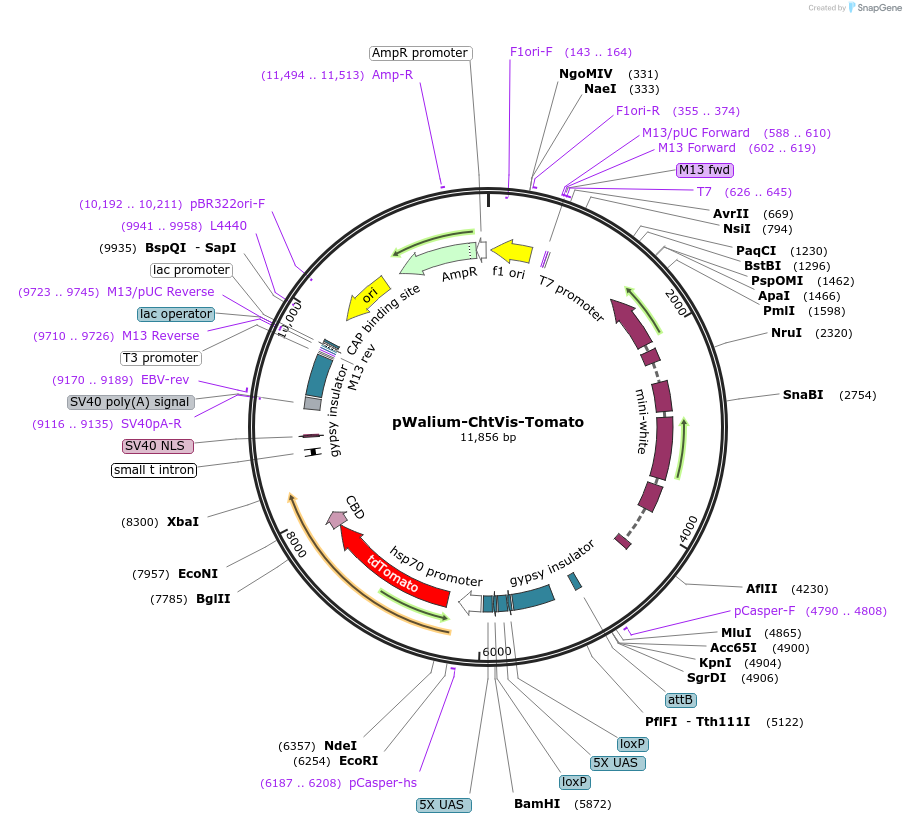pWalium-ChtVis-Tomato
(Plasmid
#67756)
-
PurposeExpresses a fluorescent chitin reporter under Gal4 control in Drosophila.
-
Depositing Lab
-
Sequence Information
Ordering
| Item | Catalog # | Description | Quantity | Price (USD) | |
|---|---|---|---|---|---|
| Plasmid | 67756 | Standard format: Plasmid sent in bacteria as agar stab | 1 | $85 | |
Backbone
-
Vector backbonepWalium-moe
-
Backbone manufacturerNorbert Perrimon
- Backbone size w/o insert (bp) 7541
- Total vector size (bp) 11852
-
Vector typeInsect Expression
Growth in Bacteria
-
Bacterial Resistance(s)Ampicillin, 100 μg/mL
-
Growth Temperature37°C
-
Growth Strain(s)DH5alpha
-
Copy numberHigh Copy
Gene/Insert
-
Gene/Insert namedyl - chitin binding domain - tdTomato - dyl
-
Alt nameChitinase A1
-
SpeciesD. melanogaster (fly); Bacillus circulans
-
Tag
/ Fusion Protein
- td-tomato (C terminal on insert)
Resource Information
-
Supplemental Documents
-
Article Citing this Plasmid
Terms and Licenses
-
Academic/Nonprofit Terms
-
Industry Terms
- Not Available to Industry
Trademarks:
- Zeocin® is an InvivoGen trademark.
Depositor Comments
The plasmid contains pieces of DNA from a number of different sources. The td-Tomato was obtained from FUtdTW, Addgene.
Chitin binding domain was purchased from New England Biolabs
The dyl cDNA came from the Drosophila genome project
The pWalium10 moe vector came originally from the N. Perrimon Lab.
These plasmids were created by your colleagues. Please acknowledge the Principal Investigator, cite the article in which the plasmids were described, and include Addgene in the Materials and Methods of your future publications.
-
For your Materials & Methods section:
pWalium-ChtVis-Tomato was a gift from Paul Adler (Addgene plasmid # 67756 ; http://n2t.net/addgene:67756 ; RRID:Addgene_67756) -
For your References section:
ChtVis-Tomato, a genetic reporter for in vivo visualization of chitin deposition in Drosophila. Sobala LF, Wang Y, Adler PN. Development. 2015 Nov 15;142(22):3974-81. doi: 10.1242/dev.126987. Epub 2015 Sep 22. 10.1242/dev.126987 PubMed 26395478





